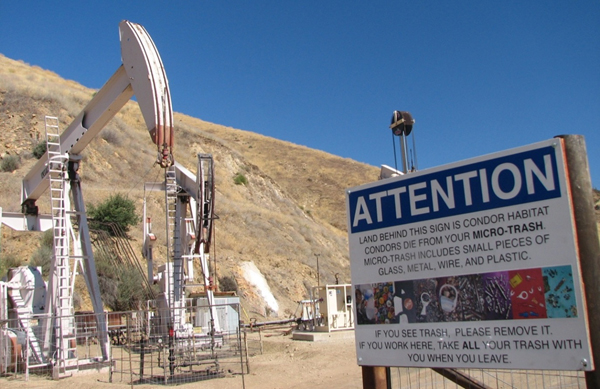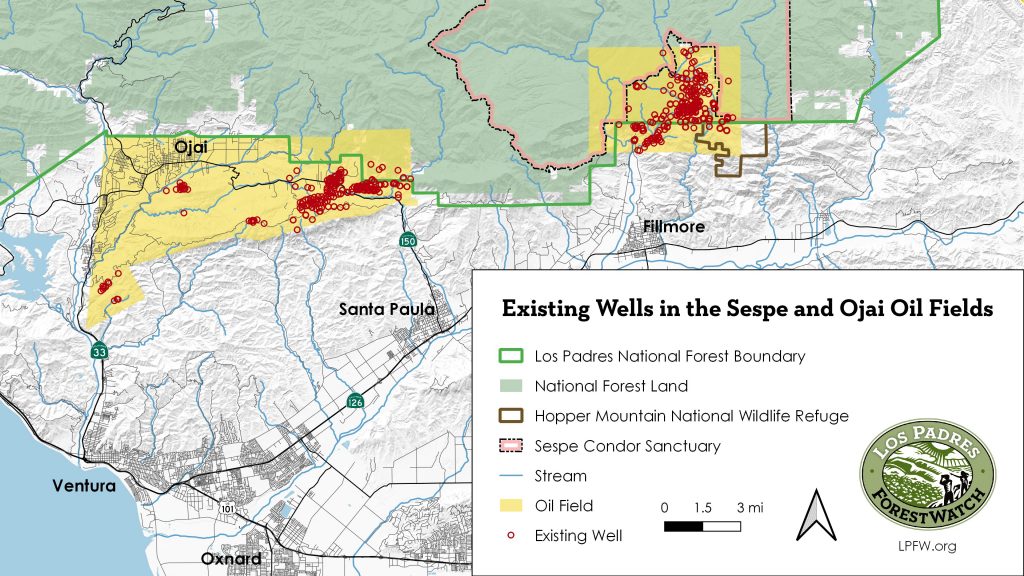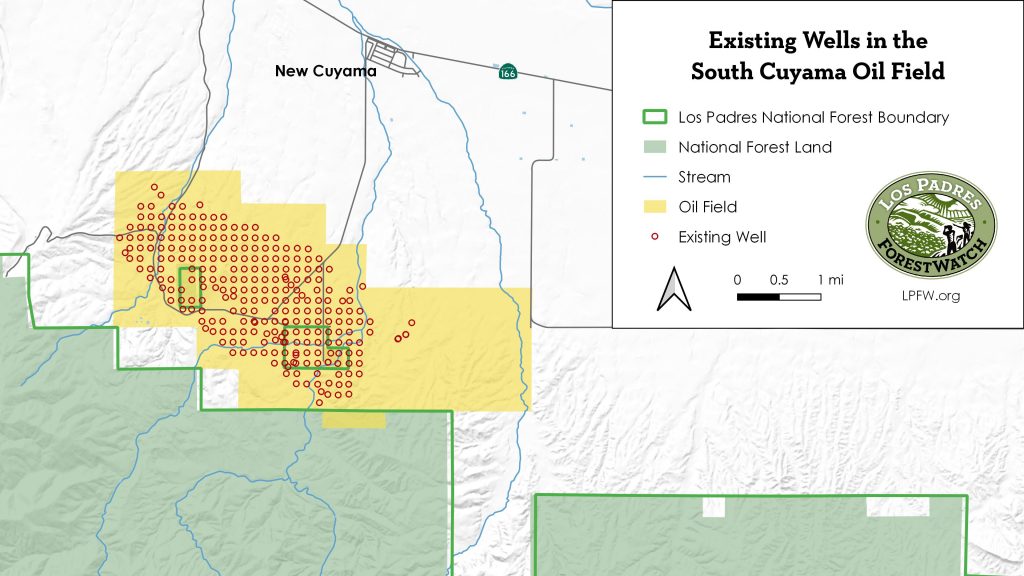
Washington, DC—Today the U.S. Forest Service announced plans to make it easier for companies to drill for oil on national forest lands. The proposed regulations—which would apply to the Los Padres National Forest in Santa Barbara and Ventura counties—would eliminate requirements for public notice, skip important environmental studies, weaken oversight and compliance, and limit forest officials’ ability to deny oil leases on federal land.
The proposed changes stem from a 2017 Executive Order issued by President Trump titled “Promoting Energy Independence and Economic Growth (EO 13783), which directed agencies to identify regulations that impede oil and gas development. In response to this EO, the U.S. Department of Agriculture—the umbrella agency for the U.S. Forest Service—recommended changes to the Forest Service’s oil and gas regulations. The following year, the Forest Service announced its intent to “decrease permitting times by removing regulatory burdens that unnecessarily encumber energy production” and then spent the last two years crafting the proposed rule change.
“Our national forests are valued for their clean water, outdoor recreation opportunities, open space, wildlife habitat, and contributions to local tourism,” said ForestWatch executive director Jeff Kuyper. “Once again, this administration is putting fossil fuel profits above the health and safety of our public lands and the communities that depend on them.”
In California, the proposed changes would target the Los Padres National Forest, the only forest in the state with fossil fuel extraction. The forest is covered by approximately 13,527 acres of oil fields in three areas: the Sespe Oil Field (201 existing wells on national forest land) north of the town of Fillmore, the Ojai Oil Field (3 existing wells on national forest land) between Ojai and Santa Paula, and the South Cuyama Oil Field (10 existing wells on national forest land) in Santa Barbara County’s remote Cuyama Valley.
All three oil fields are upstream from small rural communities that already bear the brunt of air and water pollution caused by oil production on federal lands. Oil spills have occurred in each of these oil fields, and the Sespe Oil Field was identified as one of the state’s top three areas most vulnerable to the risks of fracking, a controversial technique that injects toxic chemicals underground to extract oil. The three fields are also at the gateways to popular hiking trails including Santa Paula Canyon and the Sespe Wilderness near Dough Flat. The South Cuyama oil field blocks public access to a trailhead used for decades to access the Sierra Madre Mountains. Several endangered species, including the California condor, southern steelhead, and San Joaquin kit fox, are at risk from oil drilling activities in these areas.
The proposal eliminates the requirement to provide public notice of decisions approving development plans for oil and gas leases, would allow the Forest Service to skip important environmental studies, would allow oil companies to unilaterally extend compliance deadlines, and would make it more difficult for the Forest Service to stop oil development that threatens public health and the climate.
The proposed rule also relinquishes much of the Forest Service’s approval and oversight of oil drilling to the Bureau of Land Management, an agency that is seen as friendly to the oil industry. The proposed “one-step” authority would give away the Forest Service’s current power to serve as a checks-and-balances for places needing protection.
The changes—which could be finalized in early 2021—would apply to existing and new oil and gas leases on national forests across the country. According to the Forest Service proposal, 5,490 federal oil and gas leases cover about 4.2 million acres of national forest lands. Approximately 3,165 wells operate on these leases, generating 0.6% of the nation’s total oil and gas.
“Despite a flurry of rollbacks in Washington DC, groups around the country are working on the front lines to protect our public lands and nearby communities from oil industry plunder,” said Kuyper. “We are committed to doing everything we can to defend our public lands, our climate, and the health and safety of where we live.”
The Forest Service will accept comments on the plan until October 31, 2020. To submit comments, go to LPFW.org/oilcomments.









Comments are closed.